
Classic elegance
Jacuzzi
Piano
Individually controlled air conditioning
The countryside on both banks of the Moselle is splendid, the cool wines taste deliciously, the picturesque little towns have rich histories and the conditions for cycling are excellent indeed. You follow the river Moselle, partly in Germany, partly in France and partly in Luxembourg, along the endless vineyards and the enchanting old cities like Cochem and Bernkastel. It goes without saying that you can taste the local wine as often as you like. Then, of course, there is Trier, once an imperial Roman city. You will see the remnants […]
Gentle vineyard biking in 3 countries
Learn about Roman history in Trier
Taste the region’s fine Riesling wines
Barge with max. 31 passengers
The countryside on both banks of the Moselle is splendid, the cool wines taste deliciously, the picturesque little towns have rich histories and the conditions for cycling are excellent indeed. You follow the river Moselle, partly in Germany, partly in France and partly in Luxembourg, along the endless vineyards and the enchanting old cities like Cochem and Bernkastel. It goes without saying that you can taste the local wine as often as you like.
Then, of course, there is Trier, once an imperial Roman city. You will see the remnants of this glorious past in Germany’s oldest cathedral, amphitheater, the emperor’s throne hall and famous “black gate,” the remains of the ancient city wall.
After Trier you will follow the river Saar to visit charming Saarburg, with the stunning waterfalls in the city center. Then onto Luxembourg, the only Grand Duchy in Europe. It’s strategic position between two super powers (France and Germany) made it a contested area to control over the ages. The last day you cycle in France with her welcoming villages, where the inhabitants are proud of their sweet, smooth wines and golden “Mirabellen” liqueur. The tour end in the city of Metz, with her splendid Gothic cathedral.
You will stay the first or last day (depending on the itinerary) in a hotel in Metz. A city tour with a local guide is also part of the program. On these departures it is not possible to bring your own bike/e-bike. For more information see the 9-day day to day program and pricing overview.
The ship – Your sailing hotel
In between cycling excursions, you cruise along with the ship, which travels to a new destination every day. You dine, sleep and eat breakfast on board. You’ll receive a packed lunch every day, and you can usually choose between a longer or shorter bike ride. It’s also possible to spend a day on board if you like. There are rental bikes on board, but you can also bring your own if you mention it when booking (not possible on the 9-day tour).
Fully Guided
Accompanied by a competent, professional and multilingual tour leader, you and the group will visit interesting sights and places on the daily cycling tours. During the bike tour, they will explain the local history and culture behind the things you encounter along the way. You can also choose to ride individually with the help of our Ride with GPS app and our BBT cycling map (available on board).
Parts that are printed in italics parts will be covered by the ship.
All distances are “approximate distances” of recommended bike tours.
The tour details are barring changes, a.o. as a result of nautical, technical or meteorological reasons.
Day 1: Cochem
Embarkation and check-in is at 2 p.m. in Cochem. After a welcome meeting with the crew, the tour leader will take you for a walk through this cozy and characteristic Moselle town, with steep wine-clad mountains, wooded hills, an impressive castle and a picturesque square with beautiful timber-framed houses and cafes. A visit to Cochem’s majestic Reichsburg Castle is on the program.
Day 2: Cochem – Zell (39 km/24 mi.)
Following breakfast, you’ll cycle to Beilstein, one of the best-preserved historical villages on the Moselle. The ruins of Castle Metternich sit towering above the village, and you’ll have the opportunity to explore them. After leaving Beilstein you’ll pass Europe’s steepest vineyard – with slopes inclining up to 60 degrees – at Bremmer Calmont. Today’s tour ends in the wine village of Zell on the Moselle, well known in the industry for the wine Zeller Schwarze Katz. In Zell we recommend taking the opportunity to get to know the good wines of the Moselle valley.
Day 3: Zell on the Moselle – Bernkastel-Kues (45 km/27 mi.)
Today you’ll cycle from Zell to the romantic village of Traben-Trarbach, located on the Moselle’s left bank and famous for its Jugendstil (Art Nouveau) architecture. From there you pass through the wine city of Kröv – well-known for its popular Kröver wine – to Bernkastel-Kues, your destination for the night. The grand half-timbered houses that surround Bernkastel-Kues’s marketplace date back to the Middle Ages, and are a photographer’s delight. You’ll reach the barge in Kues after a tour through town.
Day 4: Bernkastel-Kues – Neumagen – Schweich (28 km/18 mi. or 54 km/34 mi.) | Schweich –Trier
From Bernkastel, the valley opens up and vineyards expand as far as the eye can see. Today we cruise past the heavy-hitters in the wine world: Brauneberg, Piesport, Trittenheim. Piesport is beloved by the Brits for the “little golden droplets.” Trittenheim lies in a sharp hairpin turn on the river surrounded by mountains coated with grapes. Around lunchtime you will arrive in Neumagen, already in Roman times an important center of wine production. You can decide to join the barge from here or continue by bicycle to Schweich, where again the barge will be waiting for you. Once on board you will cruise to Trier, the oldest city in Germany. Trier was founded around 15 before Christ by Caesar Augustus under the name of Augusta Trevorum. As a trading town and administrative center, Trier flourished during the late imperial age. This Roman golden age has left us with a respectable number of monuments. Most authentic is the city gate Porta Nigra, which was built around 18 after Christ.
Day 5: Trier – Saarburg (28 km/18 mi.)
In the morning your tour leader will take you into Trier and walk you around in Roman history. There is also time to discover and enjoy Trier on your own.
After lunch you will hop on your bicycles and follow the Mosel and Saar river to our next destination, Saarburg. Saarburg is an interesting old town situated in the most beautiful part of the Saar valley. Here the banks of the river are densely forested. The castle of Saarburg was built here in the middle of the 10th century. In the middle of town you come across a waterfall of 20 meters high. At the foot of this waterfall there is an old mill, which is driven by the small river. In this part of town most of the old houses from the 17th and 18th century, which give Saarburg such a picturesque look, are still intact. Today there is no dinner on board. You can select one of the local restaurants of Saarburg.
Day 6: Saarburg – Remich (45 km/27 mi. or 53 km/32 mi.)
Today there are 2 cycling options. One is easy, but a bit longer along the rivers. The shorter option is a bit more challenging, through the hills. Whatever your choice is, the cycling will lead you into the Grand Duchy Luxembourg. Here the Moselle forms the border between Germany and Luxembourg. Luxembourg is a small country, but her capital (also called Luxembourg) is an important finance center and EU administrative city. On the way, at the Luxembourg side, we visit a wine cooperative, specialized in the so called “Cremant”, say the Champagne of the Moselle. Close to Remich you can admire a Roman mosaic floor. The tile floor which lies in its original place, was once the centerpiece in a palatial Roman villa. The scene (in 3 million individual tile pieces) reveals scenes from gladiator games in the amphitheater.
Day 7: Remich – Schengen | Schengen – Thionville (30 km/18 mi.) | Thionville – Metz
While having breakfast you will cruise to Schengen, where your cycling tour will start. The “Schengen agreement” is something everybody in Europe has heard of, whereas almost nobody knows that it is named after this little town in Luxembourg at the 3-country border. Soon we will cross the Luxembourg- French border and experience the outcome of this agreement: no border controls. We pass the fortress of Sierck-les-Bains, one of the palaces inhabited by the powerful Dukes of Lorraine. The route is lovely through French countryside, and friendly villages. Around lunchtime you will arrive in Thionville, the center of the steel industry until the 1980s. That might sound modern and industrial, but the city is ancient. The historic center shows us the medieval ramparts, lovely gardens, old streets and St.Maximin basilica. Here the ship is waiting to pick you up to cruise to Metz, another ancient city strategically situated on a Roman trading route. St.Etienne Cathedral is the 3rd largest gothic church in France with flying buttresses and Marc Chagall stained glass windows. Metz is full of stunning architecture, flowers and great cafes.
Day 8: Metz
End of tour. Disembarkation after breakfast, till 9:30 a.m.
Parts that are printed in italics parts will be covered by the ship.
All distances are “approximate distances” of recommended bike tours.
The tour details are barring changes, a.o. as a result of nautical, technical or meteorological reasons.
Parts that are printed in italics parts will be covered by the ship.
All distances are “approximate distances” of recommended bike tours.
The tour details are barring changes, a.o. as a result of nautical, technical or meteorological reasons.
Day 1: Metz
Embarkation and check-in is at 2 p.m. in Metz. After a welcome meeting with the crew there is time for bicycle fitting and a little test ride. After dinner your tour leader will take you for a walk through Metz. Metz is a beautiful old city strategically situated on a Roman trading route. St. Etienne Cathedral is the 3rd largest gothic church in France with flying buttresses and Marc Chagall stained glass windows. Metz is full of stunning architecture, flowers and great cafes.
We advise you to come to Metz one or more days earlier, so that you will have plenty of time to discover this interesting city.
Day 2: Metz – Remich (41 km/26 mi. or 49 km/31 mi.)
While having breakfast you will cruise in the direction of Thionville. Close to this town your bicycle tour starts. Thionville, once was the center of the French steel industry. That might sound modern and industrial, but the city is ancient. The historic center shows you the medieval ramparts, lovely gardens, old streets and St.Maximin basilica. The route is lovely through French countryside, and friendly villages. You pass the fortress of Sierck-les-Bains, one of the palaces inhabited by the powerful Dukes of Lorraine. Via the valley of the Moselle you cross the French-Luxembourg border at Schengen. The “Schengen agreement” is something everybody in Europe has heard of, whereas almost nobody knows that it is named after this little town in Luxembourg at the 3-country border. At crossing the Luxembourg- French border we experienced the outcome of this agreement: no border controls. Close to your final destination Remich you will visit the small village of Nennig, stop at what once was an old roman villa. A tile floor which lies in its original place, was once the centerpiece in this Roman villa. The scene (in 3 million individual tile pieces) reveals scenes from gladiator games in the amphitheater.
Day 3: Remich – Saarburg (40 km/24 mi. or 48 km/ 29 mi.)
The river Moselle is here the border between Germany and Luxembourg. You start following the river on the German side, but soon you will hop to the Luxembourg side. There you’ll visit a wine cooperative, specialized in the so called “Cremant”, say the Champagne of the Moselle. Then there are 2 cycling options: One is easy, but a bit longer along the rivers. The shorter option is a bit more challenging, through the hills. Whatever your choice is, the biking will lead you to your Saarburg, an interesting old town situated in the most beautiful part of the Saar valley. Here the banks of the river are densely forested. The castle of Saarburg was built here in the middle of the 10th century. In the middle of town you come across a waterfall of 20 meters high. At the foot of this waterfall there is an old mill, which is driven by the small river. In this part of town most of the old houses from the 17th and 18th century, which give Saarburg such a picturesque look, are still intact.
Day 4: Saarburg – Trier (32 km/19 mi.)
After breakfast your tour leader will take you for a short bicycle tour to Trier. You will arrive there around lunchtime. After a guided walk there is time to discover and enjoy Trier on your own. Trier is known as the oldest city in Germany. The city was founded around 15 before Christ by Caesar Augustus under the name of Augusta Trevorum. As a trading town and administrative center, Trier flourished during the late imperial age. This Roman golden age has left us with a respectable number of monuments. Most authentic is the city gate Porta Nigra, which was built around 18 after Christ. Today there is no dinner on board. You can select one of the local restaurants of Trier.
Day 5: Trier – Schweich | Schweich – Neumagen – Bernkastel-Kues (27 km/16 mi. or 53 km/32 mi.)
After a breakfast cruise you will start your bicycle tour in Schweich. You have now entered the “The Romantic Moselle”, the unofficial name for the mid- Moselle. Lovely vineyards expand as far as the eye can see. You cruise past the heavy-hitters in the wine world: Trittenheim and Piesport. Trittenheim lies in a sharp hairpin turn on the river surrounded by mountains coated with grapes. Piesport is beloved by the Brits for the “little golden droplets.” Around lunchtime you will arrive in Neumagen, already in Roman times an important center of wine production. You can decide to join the barge from here or continue by bicycle to Bernkastel-Kues. This frequently visited, old and picturesque town produces the best wines of the Mid-Moselle. Pride of the town is the market square, with its picturesque timber-framed houses. A walk to the castle offers a beautiful view.
Day 6: Bernkastel-Kues – Traben-Trarbach – Zell on the Moselle (45 km/27 mi.)
Today’s cycling tour takes you to the romantic village of Traben-Trarbach, located on the left bank of the Moselle and famous for its Jugendstil (art nouveau) architectural style. Further along the river your destination for the night is Zell on the Moselle, well known in the wine industry for the its Zeller Schwarze Katz white wine. Zell offers the perfect opportunity for you to get to know the good wines of the Moselle.
Day 7: Zell – Beilstein – Cochem (39 km/24 mi.)
Beilstein, the “Sleeping Beauty of the Moselle”, is one of the best-preserved historical villages along the length of the river, and is the highlight of today’s cycling tour. Towering about the village are the ruins of Castle Metternich, which you’ll have the opportunity to explore. Then onto your final destination Cochem, a cozy and characteristic Moselle town, with steep wine-clad mountains, wooded hills, an impressive castle and a picturesque square with beautiful timber-framed houses and cafes. A perfect place for a glass of local wine. A visit to Reichsburg Castle is also on the program.
Day 8: Cochem
End of tour. Disembarkation after breakfast, till 9:30 a.m.
Parts that are printed in italics parts will be covered by the ship.
All distances are “approximate distances” of recommended bike tours.
The tour details are barring changes, a.o. as a result of nautical, technical or meteorological reasons.
Parts that are printed in italics parts will be covered by the ship.
All distances are “approximate distances” of recommended bike tours.
The tour details are barring changes, a.o. as a result of nautical, technical or meteorological reasons.
Day 1: Cochem
Embarkation and check-in is at 2 p.m. in Cochem. After a welcome meeting with the crew, the tour leader will take you for a walk through this cozy and characteristic Moselle town, with steep wine-clad mountains, wooded hills, an impressive castle and a picturesque square with beautiful timber-framed houses and cafes. A visit to Cochem’s majestic Reichsburg Castle is on the program.
Day 2: Cochem – Zell (39 km/24 mi.)
Following breakfast, you’ll cycle to Beilstein, one of the best-preserved historical villages on the Moselle. The ruins of Castle Metternich sit towering above the village, and you’ll have the opportunity to explore them. After leaving Beilstein you’ll pass Europe’s steepest vineyard – with slopes inclining up to 60 degrees – at Bremmer Calmont. Today’s tour ends in the wine village of Zell on the Moselle, well known in the industry for the wine Zeller Schwarze Katz. In Zell we recommend taking the opportunity to get to know the good wines of the Moselle valley.
Day 3: Zell an der Moselle – Bernkastel-Kues (45 km/27 mi.)
Today you’ll cycle from Zell to the romantic village of Traben-Trarbach, located on the Moselle’s left bank and famous for its Jugendstil (Art Nouveau) architecture. From there you pass through the wine city of Kröv – well-known for its popular Kröver wine – to Bernkastel-Kues, your destination for the night. The grand half-timbered houses that surround Bernkastel-Kues’s marketplace date back to the Middle Ages, and are a photographer’s delight. You’ll reach the barge in Kues after a tour through town.
Day 4: Bernkastel-Kues – Neumagen – Schweich (28 km/18 mi. or 54 km/34 mi.) | Schweich –Trier
From Bernkastel, the valley opens up and vineyards expand as far as the eye can see. Today we cruise past the heavy-hitters in the wine world: Brauneberg, Piesport, Trittenheim. Piesport is beloved by the Brits for the “little golden droplets.” Trittenheim lies in a sharp hairpin turn on the river surrounded by mountains coated with grapes. Around lunchtime you will arrive in Neumagen, already in Roman times an important center of wine production. You can decide to join the barge from here or continue by bicycle to Schweich, where again the barge will be waiting for you. Once on board you will cruise to Trier, the oldest city in Germany. Trier was founded around 15 before Christ by Caesar Augustus under the name of Augusta Trevorum. As a trading town and administrative center, Trier flourished during the late imperial age. This Roman golden age has left us with a respectable number of monuments. Most authentic is the city gate Porta Nigra, which was built around 18 after Christ.
Day 5: Trier – Saarburg (28 km/18 mi.)
In the morning your tour leader will take you into Trier and walk you around in Roman history. There is also time to discover and enjoy Trier on your own.
After lunch you will hop on your bicycles and follow the Mosel and Saar river to our next destination, Saarburg. Saarburg is an interesting old town situated in the most beautiful part of the Saar valley. Here the banks of the river are densely forested. The castle of Saarburg was built here in the middle of the 10th century. In the middle of town you come across a waterfall of 20 meters high. At the foot of this waterfall there is an old mill, which is driven by the small river. In this part of town most of the old houses from the 17th and 18th century, which give Saarburg such a picturesque look, are still intact. Today there is no dinner on board. You can select one of the local restaurants of Saarburg.
Day 6: Saarburg – Remich (45 km/27 mi. or 53 km/32 mi.)
Today there are 2 cycling options. One is easy, but a bit longer along the rivers. The shorter option is a bit more challenging, through the hills. Whatever your choice is, the cycling will lead you into the Grand Duchy Luxembourg. Here the Moselle forms the border between Germany and Luxembourg. Luxembourg is a small country, but her capital (also called Luxembourg) is an important finance center and EU administrative city. On the way, at the Luxembourg side, we visit a wine cooperative, specialized in the so called “Cremant”, say the Champagne of the Moselle. Close to Remich you can admire a Roman mosaic floor. The tile floor which lies in its original place, was once the centerpiece in a palatial Roman villa. The scene (in 3 million individual tile pieces) reveals scenes from gladiator games in the amphitheater.
Day 7: Remich – Schengen | Schengen – Schengen (50 km/36 mi.)
While having breakfast you’ll cruise to Schengen, where your cycling tour started. On the bike, you’ll cross into France, cycling through lovely French countryside and villages. Around lunchtime you’ll arrive in Thionville, the center of the steel industry until the 1980s. That might sound modern and industrial, but the city is ancient. The historic center shows us the medieval ramparts, lovely gardens, old streets and St.Maximin Basilica. In the afternoon we’ll head back to Schengen, where we’ll enjoy our final dinner together, then spend the night on board the ship.
Day 8: Schengen – Metz
After breakfast, you’ll say goodbye to the crew of the ship and board a bus that will take you back to Metz. You’ll check into a hotel upon arrival, allowing you plenty of time to explore the city at your leisure.
In the afternoon, you can join a guided tour of the city with a local guide. You’ll see the St. Etienne Cathedral, the third-largest Gothic church in France with flying buttresses and Marc Chagall stained-glass windows. You’ll have the evening to yourself to explore more of the city and try one of the local French restaurants before saying goodbye to your fellow travelers. Your tour leader will accompany you today on the journey to Metz.
Day 9: Metz
On your final day, after breakfast, you can reflect on the past week’s adventures and enjoy some free time in Metz before heading home. Check-out time is before 9:30 a.m.
Parts that are printed in italics parts will be covered by the ship.
All distances are “approximate distances” of recommended bike tours.
The tour details are barring changes, a.o. as a result of nautical, technical or meteorological reasons.
Parts that are printed in italics parts will be covered by the ship.
All distances are “approximate distances” of recommended bike tours.
The tour details are barring changes, a.o. as a result of nautical, technical or meteorological reasons.
Day 1: Metz
Upon arrival in Metz, you can check into your hotel at your leisure from 4:00 pm. Take the evening to explore the beautiful historic city of Metz, situated on a Roman trading route. Marvel at St. Etienne Cathedral, the third largest gothic church in France, with its flying buttresses and Marc Chagall stained-glass windows. Enjoy the stunning architecture, lovely flowers, and cozy cafés that make Metz so charming. Get a good night’s sleep before starting on your boating and cycling adventure tomorrow!
Day 2: Metz – Schengen
At 11:00 am, your tour leaders will welcome you at the hotel, and then it’s time to set out on your adventure. Leave your bags behind for a while and explore Metz during the day with a knowledgeable local guide. After lunch and bag pickup, a bus will take you south to the border village of Schengen, where your ship awaits. Schengen is famous for the “Schengen Agreement,” a well-known European treaty named after this little town in Luxembourg at the 3-country border. Your guide will explain the history and significance of the agreement, which eliminated border controls between many European countries. Meet the crew and get fitted for your bike, then take a test ride guided by your tour leader. In the evening, enjoy a welcome dinner on board.
Day 3: Schengen – Remich (41 km/26 mi. or 49 km/31 mi.)
Start your first cycling ride from Schengen, following the Moselle Valley. Along the way, visit the small village of Nennig, near today’s final destination of Remich. Take in the sights of an old Roman villa, complete with a tile floor that remains in its original place. The centerpiece of the villa, the tile floor, is made up of 3 million (!) individual pieces and depicts scenes from gladiator games in the amphitheater.
Day 4: Remich – Saarburg (40 km/24 mi. or 48 km/ 29 mi.)
The river Moselle is here the border between Germany and Luxembourg. You start following the river on the German side, but soon you will hop to the Luxembourg side. There you’ll visit a wine cooperative, specialized in the so called “Cremant”, say the Champagne of the Moselle. Then there are 2 cycling options: One is easy, but a bit longer along the rivers. The shorter option is a bit more challenging, through the hills. Whatever your choice is, the biking will lead you to your Saarburg, an interesting old town situated in the most beautiful part of the Saar valley. Here the banks of the river are densely forested. The castle of Saarburg was built here in the middle of the 10th century. In the middle of town you come across a waterfall of 20 meters high. At the foot of this waterfall there is an old mill, which is driven by the small river. In this part of town most of the old houses from the 17th and 18th century, which give Saarburg such a picturesque look, are still intact.
Day 5: Saarburg – Trier (32 km/19 mi.)
After breakfast your tour leader will take you for a short bicycle tour to Trier. You will arrive there around lunchtime. After a guided walk there is time to discover and enjoy Trier on your own. Trier is known as the oldest city in Germany. The city was founded around 15 before Christ by Caesar Augustus under the name of Augusta Trevorum. As a trading town and administrative center, Trier flourished during the late imperial age. This Roman golden age has left us with a respectable number of monuments. Most authentic is the city gate Porta Nigra, which was built around 18 after Christ. Today there is no dinner on board. You can select one of the local restaurants of Trier.
Day 6: Trier – Schweich | Schweich – Neumagen – Bernkastel-Kues (27 km/16 mi. or 53 km/32 mi.)
After a breakfast cruise you will start your bicycle tour in Schweich. You have now entered the “The Romantic Moselle”, the unofficial name for the mid- Moselle. Lovely vineyards expand as far as the eye can see. You cruise past the heavy-hitters in the wine world: Trittenheim and Piesport. Trittenheim lies in a sharp hairpin turn on the river surrounded by mountains coated with grapes. Piesport is beloved by the Brits for the “little golden droplets.” Around lunchtime you will arrive in Neumagen, already in Roman times an important center of wine production. You can decide to join the barge from here or continue by bicycle to Bernkastel-Kues. This frequently visited, old and picturesque town produces the best wines of the Mid-Moselle. Pride of the town is the market square, with its picturesque timber-framed houses. A walk to the castle offers a beautiful view.
Day 7: Bernkastel-Kues – Traben-Trarbach – Zell on the Moselle (45 km/27 mi.)
Today’s cycling tour takes you to the romantic village of Traben-Trarbach, located on the left bank of the Moselle and famous for its Jugendstil (art nouveau) architectural style. Further along the river your destination for the night is Zell on the Moselle, well known in the wine industry for the its Zeller Schwarze Katz white wine. Zell offers the perfect opportunity for you to get to know the good wines of the Moselle.
Day 8: Zell – Beilstein – Cochem (39 km/24 mi.)
Beilstein, the “Sleeping Beauty of the Moselle”, is one of the best-preserved historical villages along the length of the river, and is the highlight of today’s cycling tour. Towering about the village are the ruins of Castle Metternich, which you’ll have the opportunity to explore. Then onto your final destination Cochem, a cozy and characteristic Moselle town, with steep wine-clad mountains, wooded hills, an impressive castle and a picturesque square with beautiful timber-framed houses and cafes. A perfect place for a glass of local wine. A visit to Reichsburg Castle is also on the program.
Day 9: Cochem
End of tour. Disembarkation after breakfast, till 9:30 a.m.
To view the availability of this tour and/or book online please click on the button below. A new screen will open.
On selected departures, you will receive a discount of 200 euro per person. The discount is only valid for new bookings and cannot be combined with other discounts. In the calendar, discount dates are highlighted in orange.
Also included on the 9-day tour with the Magnifique III:
Also excluded on the 9-day tour with the Magnifique III:

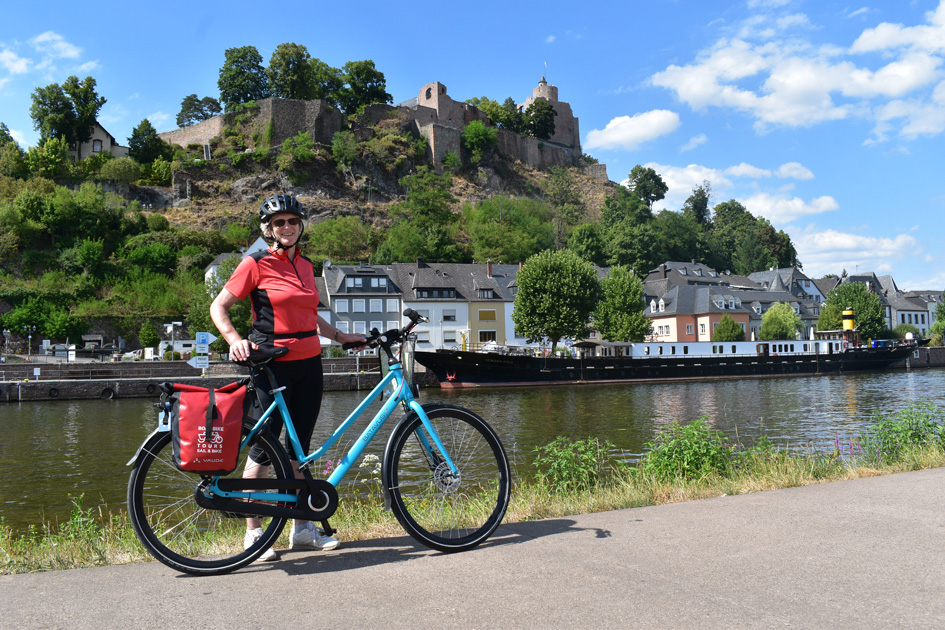




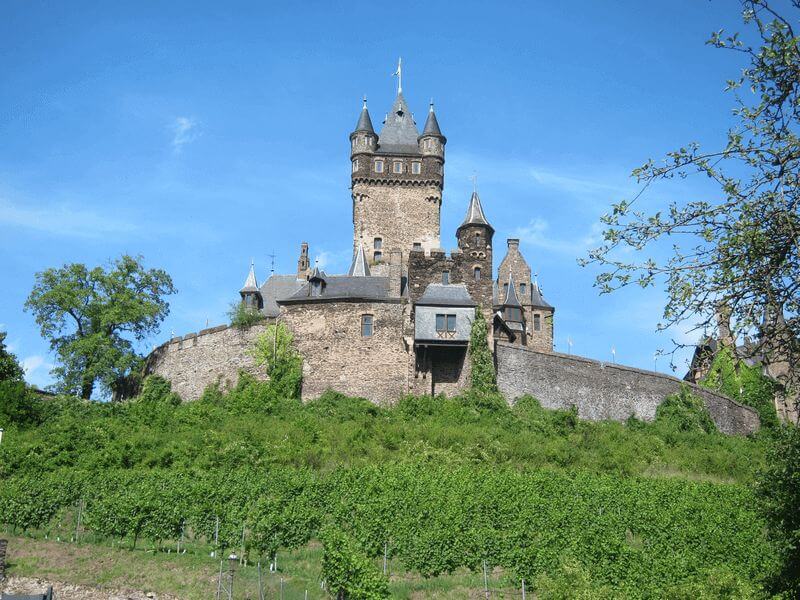





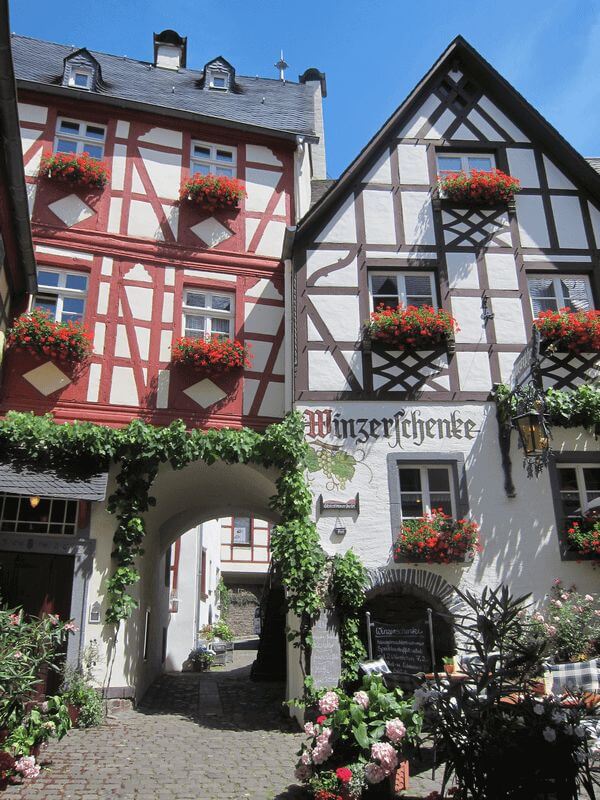

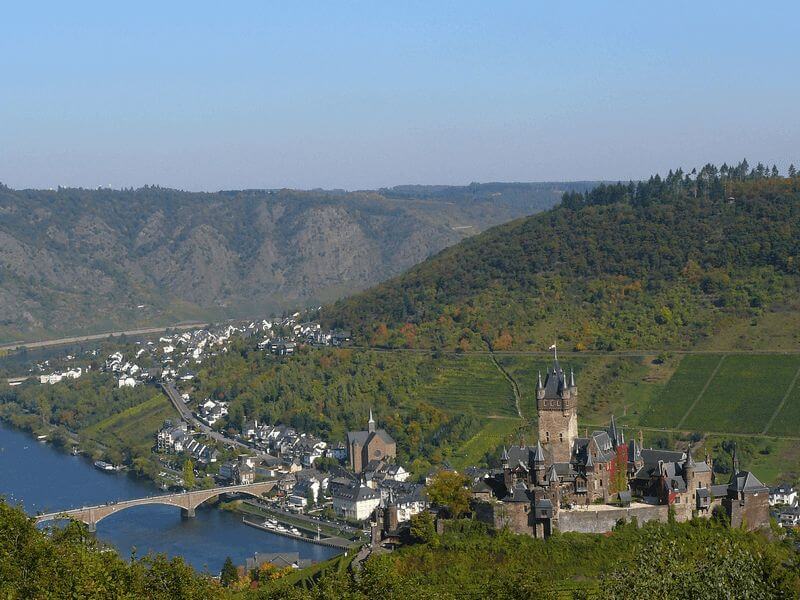


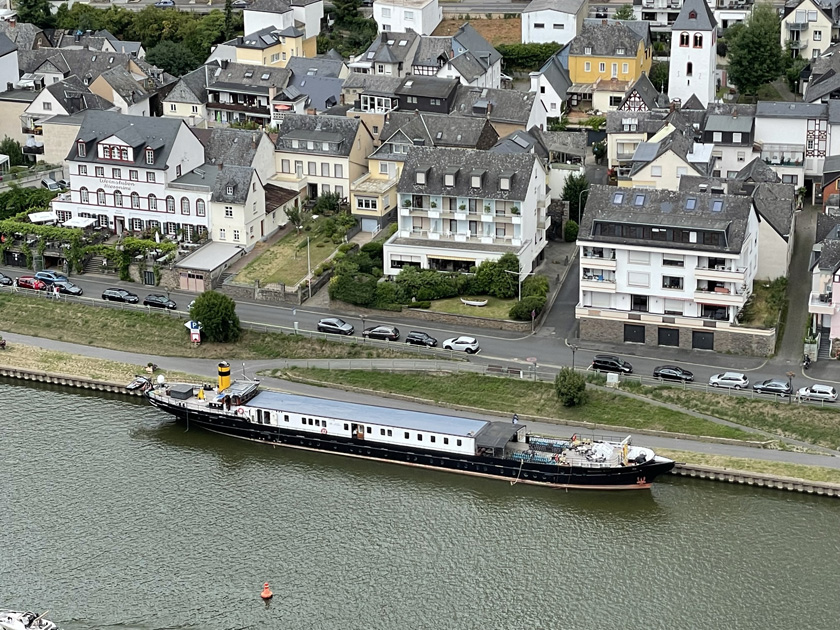


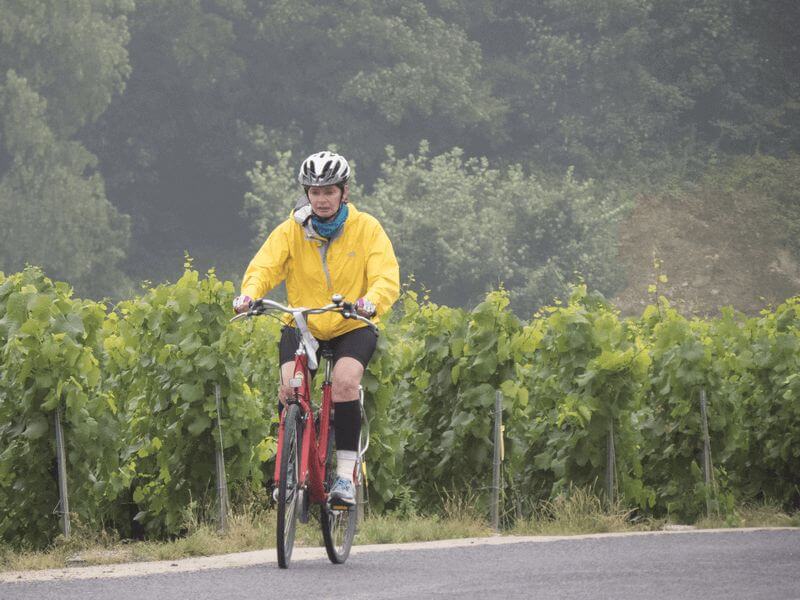



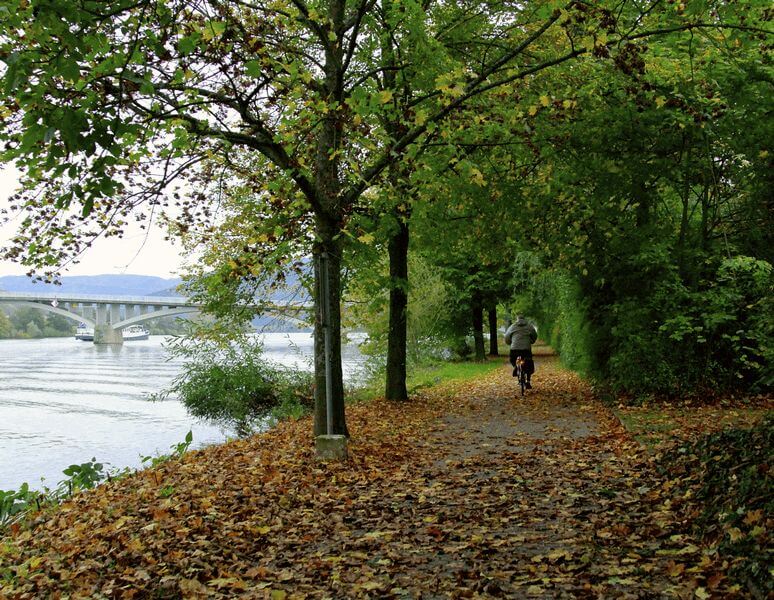

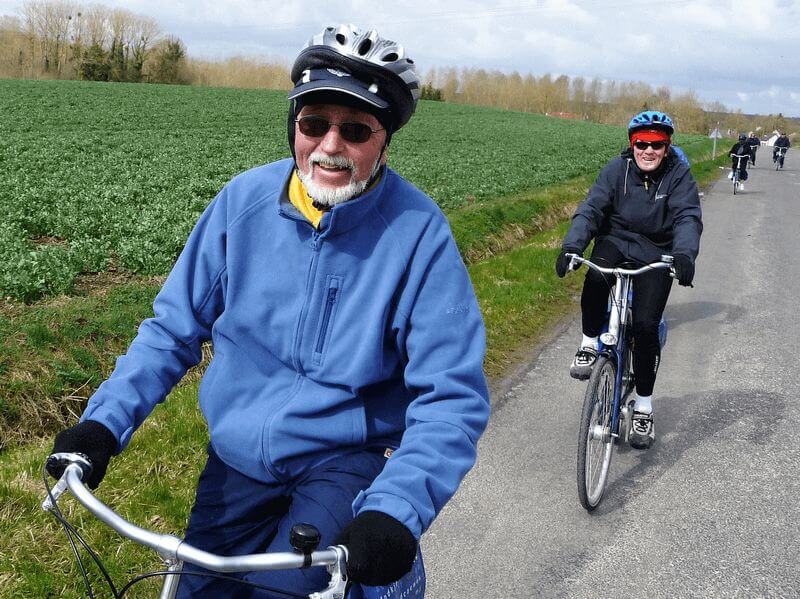
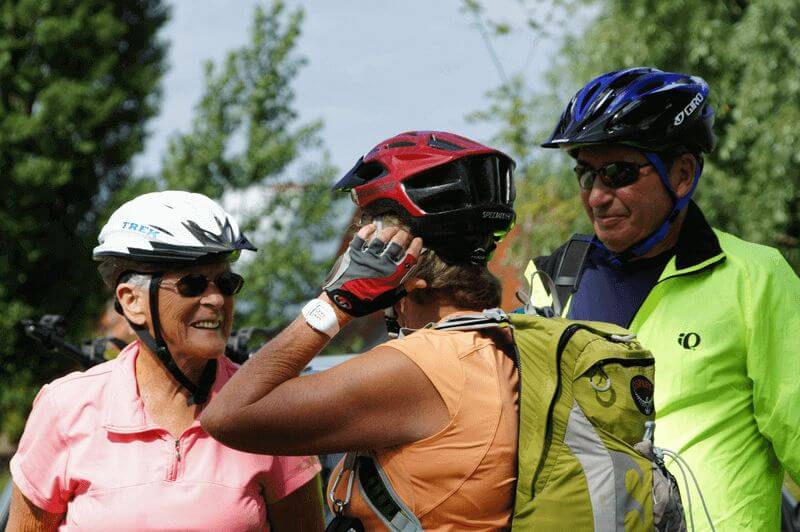

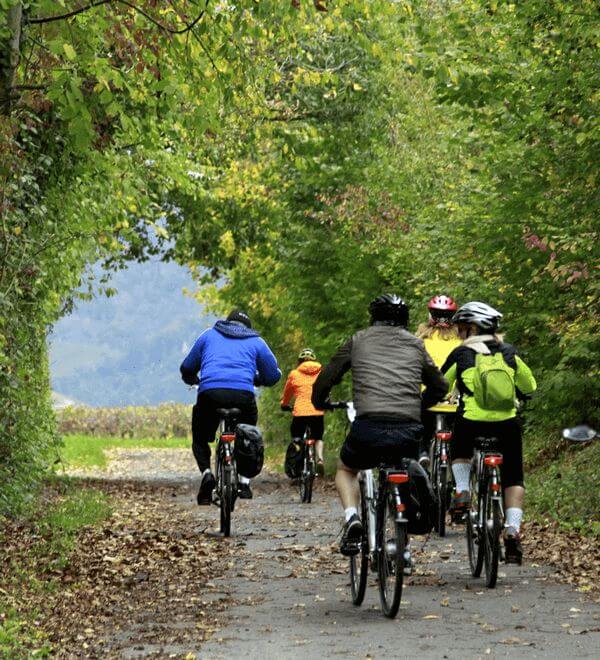
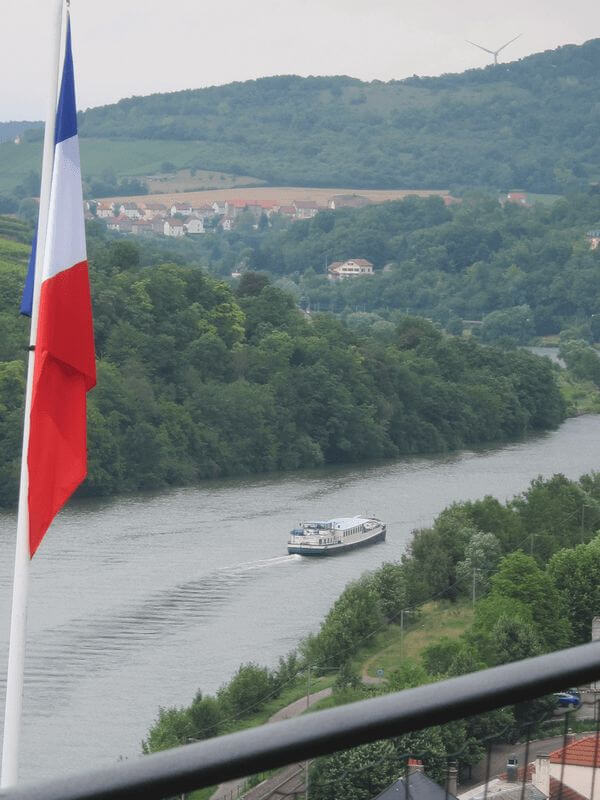




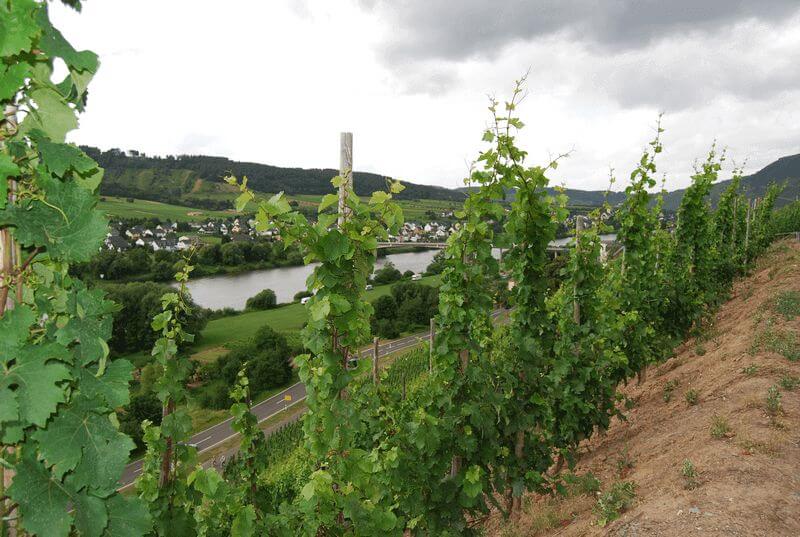

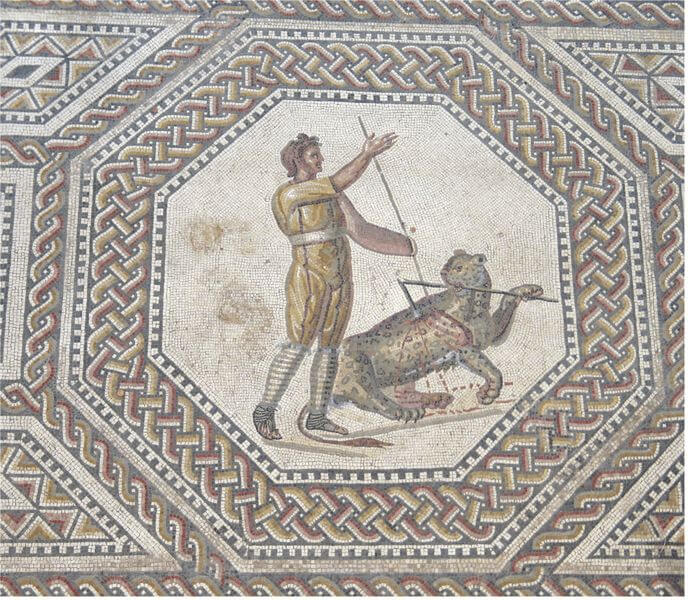
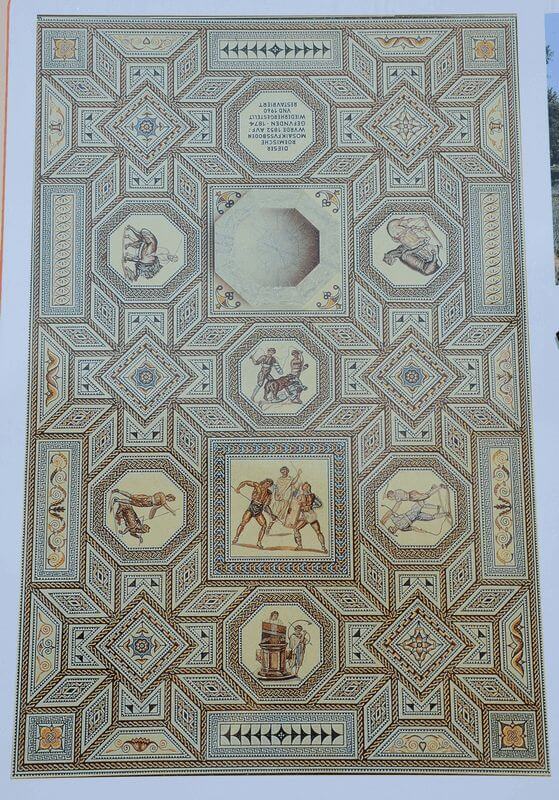



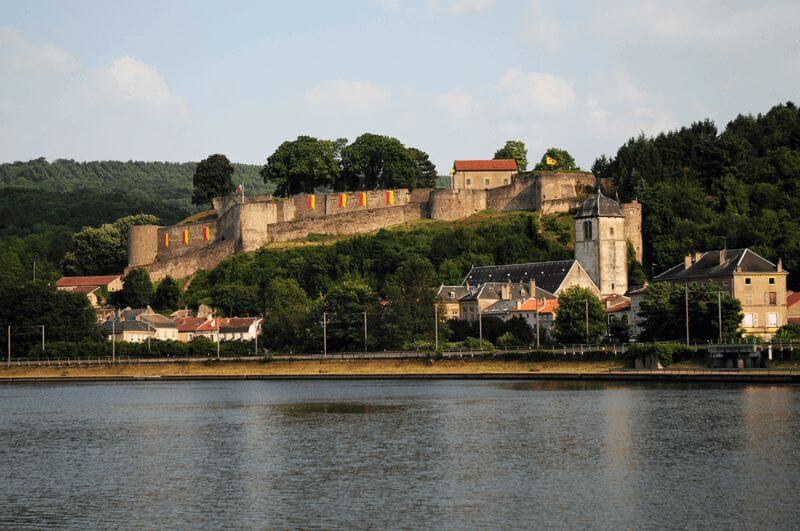



Classic elegance
Jacuzzi
Piano
Individually controlled air conditioning

Spacious teakwood deck
Jacuzzi
Intimate and exclusive
Individually controlled air conditioning

Intimate and exclusive
Individually controlled air conditioning
Covered sun deck
New junior suites

Explore three beautiful rivers by bike
Taste fine regional wines
Visit medieval castle Burg Eltz
Ship with max. 31 passengers


Gentle cycling along majestic rivers
Learn about Roman history
Taste fine Riesling wines
Premium barge with max. 31 passengers


Biking in River Main’s idyllic vineyards
Visit UNESCO-listed Bamberg & Würzburg
Taste delicious Bavarian wines and beers
Premium barge with max. 31 passengers

 Germany, Luxembourg and France: Cochem – Metz or Metz – Cochem Premium
Germany, Luxembourg and France: Cochem – Metz or Metz – Cochem Premium
Please fill out the form below to receive tailored offers according to your preferences and availability. After completing the form, you will receive your personalized offers via email. You can expect a response within 48 hours on business days. Please enter your information. The required fields are marked with an * .